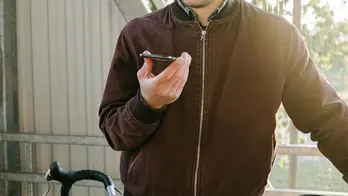How 'superworms' could help solve the trash crisis
A bunch of small but hungry bugs might hold the key to saving the planet thanks to their uncanny ability to devour polystyrene — the material behind plastic foam. These so-called "superworms" could one day help rid landfills of this waste and thus put a dent in one of the drivers of global warming.
Chris Rinke and other researchers from the University of Queensland in Australia are studying the larvae of the darkling beetle — or zophobas morio, its scientific name. They published a study in the journal Microbial Genomics earlier this month that found the bugs could survive on polystyrene alone, and in 66.7% of cases, transform into beetles on that relatively poor diet.
"They're really eating machines," Rinke said in an interview on NPR's Morning Edition. "Their main goal is to gain as much weight as they can to then become a pupa and a beetle. So, they're not very picky eaters."
In their natural environment, these so-called "superworms"' eat various types of decaying matter, such as rotten wood, leaves and even animal carcasses.
The secret lies in the guts of these "superworms," specifically their microbiomes. The scientists studied how the larvae break down some of the staggering plastic waste humans produce. The insects produce enzymes as they slice and dice through the white stuff.
"We could have gigantic worm farms with millions of worms and feed them polystyrene. But what scales way better, and is I would say also cheaper, is to focus on the enzymes," Rinke said.
The ultimate goal, he says, would be to synthetically reproduce these enzymes in a lab to recycle plastic by spreading a type of emulsion he dubs an "enzyme cocktail" over shredded plastic. Microbes could then help upcycle the material into bioplastics — which can take the form of very utilitarian products like corn-based utensils.
"Polystyrene waste, which is a rather low-value product, it goes through this biological degradation using the enzymes and then you can feed it to microbes to then produce something like bioplastic, which is actually a higher-value product. So then you would break the cycle" of waste, he explained.
But in order for a solution like this to exit the realm of science-fiction and enter reality, consumers will also need to step up to the plate by spending more on ecologically-friendly products, which would in turn help reduce plastic production.
Rinke added that plastic recycling rates are very low.
"I think the long-term vision is we use what nature can offer to help degrade the synthetic polymers we have made of petroleum and then we slowly transition to natural polymers," he said.
For Rinke, it's also a personal journey and commitment that began with a sailing trip he took with his wife across the Pacific Ocean.
"We stopped at a beautiful uninhabited island in French Polynesia and we stayed there for a week and it was it was paradise. But if you look very carefully, you can see plastic there, right, and that kind of made it obvious that there's no escape," he recalled.
"You're on a tropical island somewhere thousands of miles away from any continent and there's plastic debris. So plastic is really everywhere. And that was one of the reasons why I wanted to look into that."
For now, he's holding out hope that what's inside the guts of this tiny bug just might make our world a greener, better place.
Disclaimer: The copyright of this article belongs to the original author. Reposting this article is solely for the purpose of information dissemination and does not constitute any investment advice. If there is any infringement, please contact us immediately. We will make corrections or deletions as necessary. Thank you.







